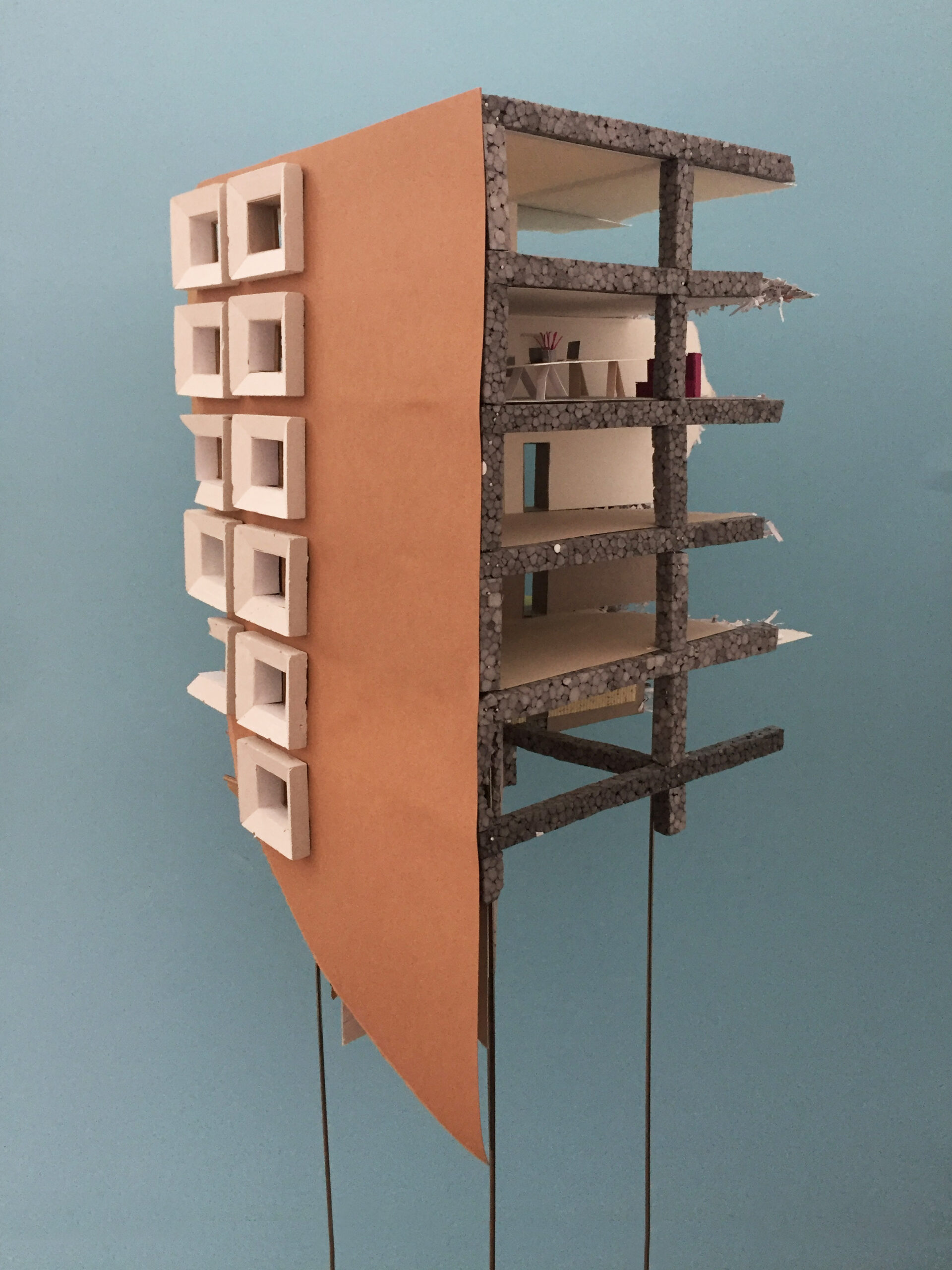The MA explores an office building from 1980s in the heart of Tallinn, also known as the Architects’ and Engineers’ Building as it housed the three largest planning offices in Soviet Estonia. The observations are noted between the decision to have it demolished and the execution of the plans. The thesis includes intertwining essays and notes discussing ideas on architectural design, time, modernist patterns, heritage and the difficulties to remain in the present. Observations and mapping of the Architects’ Building today show its temporary and uncertain existence. They capture the moment when, on the one hand, nothing happens while the ambiguity of the situation has also allowed diverse activities and curious environments to emerge. The projections of the building are set in and exaggerate the present. They feature spatial interventions in the current environment – removals and takeovers. The removals eliminate occasional (profitable) square metres while giving more space to current tenants and possible passers-by. The takeovers are seen in the maintenance work, replacements, small additions and the visions of a new programme – living. Now that our present existence is shadowed by various possible futures, the work comes to explore the frozen state as a curious possibility.


Madli’s Master’s thesis provides the story of the Architects’ and Engineer’s Building from its design and construction to this day in simple descriptions. The selection of the topic is mindful and timely.
The thesis is concerned with the concepts of heritage, obsolescence and change. The modernist building in the city centre has become a kind of social outcast. The study highlights the complexity of its location in the context of Soviet architectural heritage and the new development plans of Rävala quarter. One of the recurrent topics in the thesis is the relation between time and space. The author’s deep interest and contemplation are revealed in her analysis of archive materials as well as fictional, theoretical, historical and media texts. The student has also interviewed people who have worked or still work in the building. The drawings are like layered X-rays providing a curious rendering of spatial poetics. The textual and graphic materials are closely connected and probably complemented one another in the course of the work. The thesis is not business-like as expected from an architect, rather it could be compared to a poem that is understandable in a particular mood and mindset.
Peeter Pere, Member of the jury, The Student Award of the Estonian Association of Architects












































































































































































































